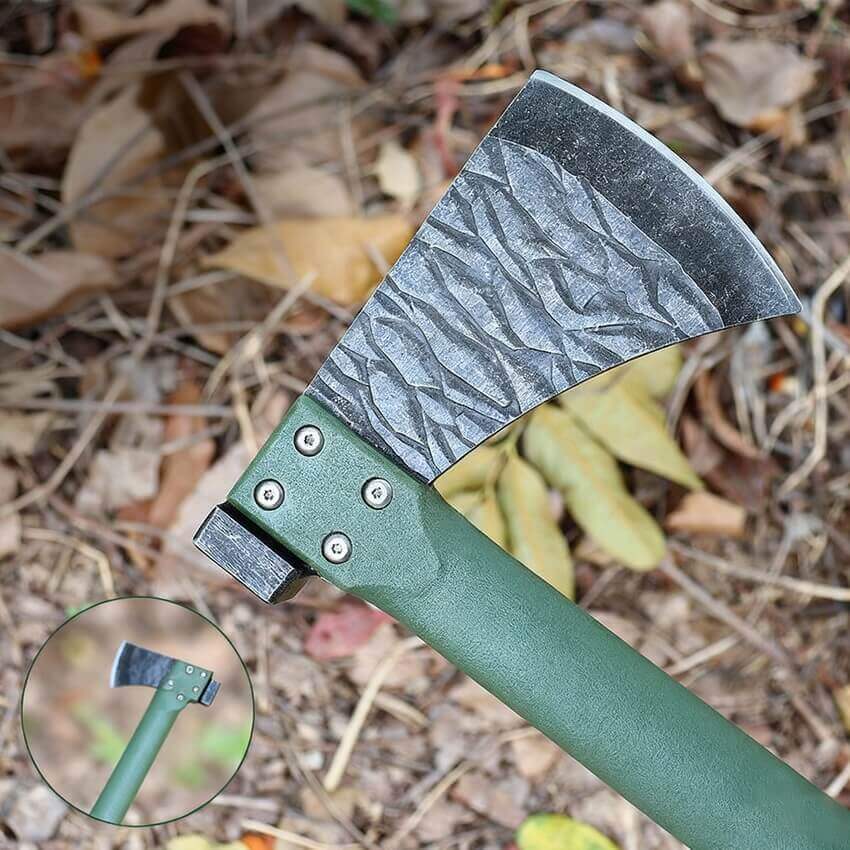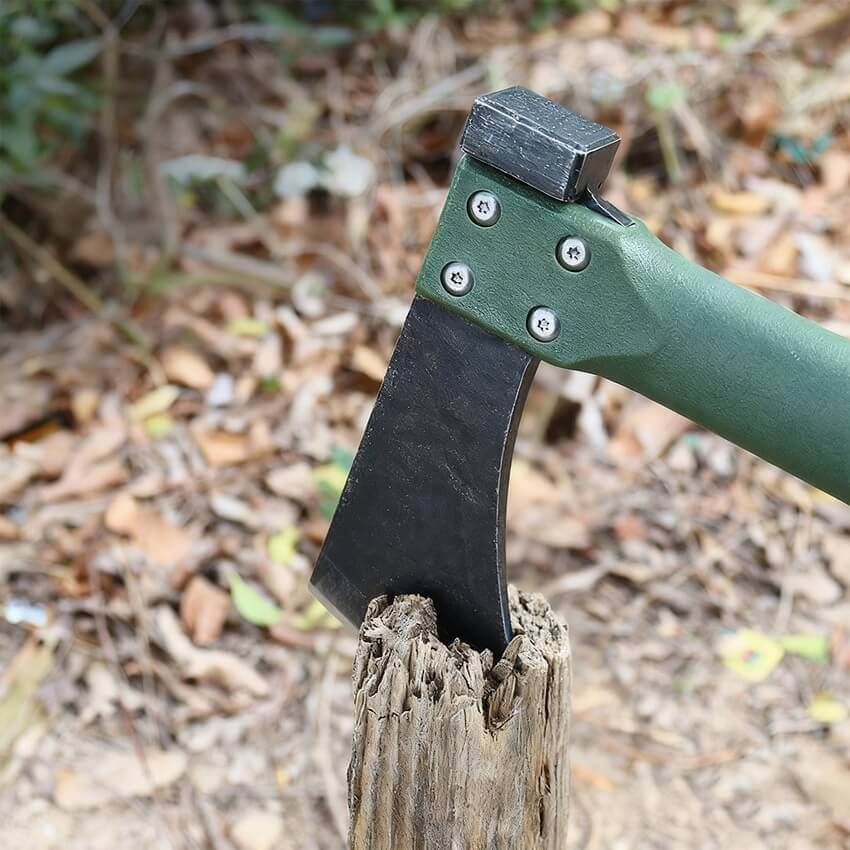![]() Windy
Windy
 WeChat
WeChat
 WhatsApp
WhatsApp
Click:64 seen
In the world of outdoor exploration, every piece of equipment serves as a medium for the explorer to communicate with nature. And this olive-green multi-functional survival axe undoubtedly stands out as the most compelling "communicator" among them. It is far from being just a simple cutting tool; it is a wilderness companion that combines practicality, wisdom, and survival philosophy. In the fusion of metal and plastic, it interprets humanity's reverence and exploration desire for nature.
I. Design: The Blending of Functionality and Aesthetics
Upon first sight of this survival axe, the olive green main color conveys a strong outdoor essence - it is the background color of the jungle, the soul of camouflage, and also a color expression of humans' showing weakness to nature yet not willing to compromise. The design of the axe handle can be described as "modular art": when disassembled, the axe head, dagger, and accessories form individual units; when combined, they transform into a highly aggressive survival weapon. The blade of the axe head is treated with texture processing, this kind of design similar to "forged pattern" is not only for aesthetics, but also physically increases the friction between the blade surface and the cut object, improving the cutting efficiency; the hardness of the metal blade edge has been specially treated, capable of meeting the cutting requirements of common outdoor materials such as wood and ropes. The plastic material of the axe handle has both anti-slip and lightweight characteristics, providing a comfortable grip and effectively buffering the shock during chopping, and is not prone to fatigue even after long-term use. The most ingenious part is its storage system: the axe head and dagger can be perfectly embedded in the axe sheath, and the accessories (lighter) are hidden within it. This "integrated storage" concept, in the limited space of an outdoor backpack, is a supreme respect for space. When it appears in its complete form, it resembles an industrial design artwork, achieving a wonderful balance between functionality and visual aesthetics in the wilderness context.

II. Function: A Versatile Tool for Survival Scenarios
In outdoor survival, this axe's functions go far beyond "cutting firewood". It is more like a miniature "survival toolbox".
Cutting and construction are its core capabilities. Whether it is cutting wood to build a shelter or handling firewood fuel, the blade of the axe can efficiently complete the task. The ratio of the axe handle's length and weight has been carefully designed, ensuring the kinetic energy during chopping while not being overly heavy as a burden.
The hidden combat power of the dagger is also not to be underestimated. When the dagger is pulled out from the axe handle, it can be used for precise cutting work - such as handling food, making trap devices, and even serving as a defense tool in extreme situations. The steel selection of the blade takes into account both sharpness and toughness, capable of meeting the complex cutting requirements of the outdoors.
The wisdom of the accessory details often shines at critical moments. The small screwdriver attached can be used to adjust equipment and repair tools; the fixing structure on the axe sheath can securely bind it to the backpack or belt, enabling quick access. These seemingly minor designs are the products of profound insights into outdoor scenarios.

III. Philosophy: Seeking Balance Between Conquest and Reverence
This survival axe reflects the deep philosophy of human outdoor exploration. It is the embodiment of "conquest desire" - using the sharpness of metal to break through the barriers of the jungle and using the power of tools to confront natural obstacles; but it is also the carrier of "awe in heart" - every precise chopping is based on following the laws of nature, and every storage of the tool implies respect for the environment.
In the wilderness, it teaches users the "minimalist" survival logic: one tool with multiple functions, eliminating redundancy, and only keeping the core. This logic is not only applicable to equipment selection, but also to the cognition of survival needs - stripping away the glitz of the city, returning to the essential needs of life, and being able to stand calmly in nature.
At the same time, it also interprets the outdoor ethics of "partnership". Good equipment is not an ice-cold tool, but rather a like a comrade-like existence: you rely on its functions, and it also relies on your usage skills; you give it life through maintenance, and it returns safety in tasks. This symbiotic relationship is one of the most touching chapters in outdoor culture.

Conclusion
This olive-green multi-functional survival axe is a symphony of steel and plastic, a dance of functionality and aesthetics, and a reflection of the human spirit in exploring nature. In the wilderness, it not only chops through wood but also represents the fear of the unknown; it not only embodies the function of the tool but also carries the pursuit of freedom, challenges, and the true essence of life by outdoor adventurers. When it is neatly stored and accompanies the explorer on their return journey, the scratches and wear on its surface have become the footnotes of the wilderness story - each mark is a sign of a conversation with nature, and each one is a deposit of survival wisdom.
